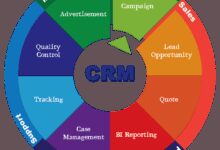B2B Mastery: 7 Powerful Strategies to Skyrocket Your Business Growth
Welcome to the ultimate guide on B2B—where businesses connect, grow, and thrive. Whether you’re new to the scene or looking to sharpen your edge, this deep dive reveals the secrets behind high-performing B2B operations.
What Exactly Is B2B? Defining the Backbone of Modern Commerce

The term B2B, or Business-to-Business, refers to transactions between companies rather than between a company and individual consumers (B2C). This model powers industries from manufacturing to SaaS, forming the backbone of global supply chains and enterprise innovation.
The Core Concept of B2B Transactions
At its heart, B2B involves one business selling products or services to another. For example, a software company licensing its CRM platform to an enterprise is engaging in a B2B transaction. These relationships are often long-term, contract-based, and driven by ROI-focused decision-making.
- Sales cycles are typically longer than in B2C.
- Purchasing decisions involve multiple stakeholders.
- Value is measured in efficiency, scalability, and integration.
“B2B isn’t just about selling—it’s about solving complex business problems at scale.” — Forbes Insights, 2023
How B2B Differs from B2C
While B2C targets emotions and individual needs, B2B appeals to logic, cost-efficiency, and operational impact. A consumer might buy a laptop for personal use based on design and brand appeal, but a business purchases dozens of laptops based on durability, warranty, and volume pricing.
- B2B buyers prioritize functionality over aesthetics.
- Decision-making units (DMUs) include procurement teams, IT managers, and CFOs.
- Customer support expectations are higher and more technical.
The Evolution of B2B: From Trade Shows to Digital Marketplaces
The B2B landscape has undergone a radical transformation over the past three decades. What once relied heavily on face-to-face meetings and printed catalogs now thrives in digital ecosystems powered by AI, data analytics, and e-commerce platforms.
Pre-Internet Era: Relationship-Driven Commerce
In the 1980s and early 1990s, B2B sales were deeply personal. Sales reps built trust through repeated visits, trade shows, and phone calls. Contracts were negotiated over meals, and loyalty was earned through years of consistent service.
- Information asymmetry favored sellers.
- Buyers had limited access to competitor pricing.
- Lead generation depended on referrals and cold calling.
The Digital Revolution and E-Procurement
The rise of the internet democratized information. Buyers could now research vendors, compare features, and read reviews online. Platforms like Alibaba and ThomasNet emerged as digital marketplaces connecting global suppliers with businesses.
- E-procurement systems streamlined purchasing workflows.
- RFQ (Request for Quotation) processes moved online.
- Vendors began investing in professional websites and SEO.
Modern B2B: The Age of Automation and Data
Today’s B2B environment is defined by automation, personalization, and data-driven strategies. Tools like HubSpot, Salesforce, and LinkedIn Sales Navigator empower companies to target prospects with surgical precision.
- Marketing automation nurtures leads 24/7.
- AI-powered chatbots handle initial inquiries.
- CRM systems track every interaction across the buyer journey.
B2B Marketing: Strategies That Deliver Real Results
Effective B2B marketing goes beyond flashy ads. It’s about building credibility, demonstrating expertise, and guiding informed buyers through a complex decision-making process. Let’s explore the most impactful strategies shaping today’s B2B landscape.
Content Marketing: The Foundation of Trust
In B2B, content isn’t just king—it’s the entire kingdom. Decision-makers seek detailed, authoritative information before committing to high-value purchases. Whitepapers, case studies, and webinars position your brand as a thought leader.
- Create in-depth guides that solve specific industry pain points.
- Use SEO to attract organic traffic from decision-makers searching for solutions.
- Leverage gated content to capture qualified leads.
“Companies that publish regular blog content generate 67% more leads than those that don’t.” — HubSpot State of Inbound Report
Account-Based Marketing (ABM): Precision Over Volume
Unlike traditional lead generation, ABM flips the script by targeting specific accounts with personalized campaigns. Instead of casting a wide net, you focus on high-value prospects with tailored messaging.
- Identify key decision-makers within target companies.
- Develop customized content and outreach sequences.
- Align sales and marketing teams around shared goals.
Social Selling and LinkedIn Dominance
LinkedIn has become the go-to platform for B2B professionals. With over 900 million users, it offers unparalleled access to executives, engineers, and procurement officers. Social selling—using social media to build relationships and influence buying decisions—is now a core skill for modern sales teams.
- Optimize your LinkedIn profile with clear value propositions.
- Engage with prospects by commenting on their posts and sharing insights.
- Use LinkedIn Sales Navigator to identify and track target accounts.
B2B Sales Funnel: Mapping the Buyer’s Journey
Understanding the B2B sales funnel is critical for converting interest into revenue. Unlike B2C, where purchases can be impulsive, B2B decisions follow a structured path involving research, evaluation, and approval.
Stage 1: Awareness – Making the First Impression
This is where prospects realize they have a problem. Your goal is to be visible when they start searching for solutions. SEO-optimized blog posts, YouTube explainer videos, and industry reports help capture attention at this stage.
- Target informational keywords like “how to reduce supply chain costs.”
- Use paid ads to reach audiences actively researching solutions.
- Host free webinars to introduce your expertise.
Stage 2: Consideration – Building Credibility
Now that the buyer knows their problem, they’re evaluating options. This is where case studies, product comparisons, and demo videos shine. You must prove why your solution is superior to competitors.
- Highlight ROI metrics from existing clients.
- Offer free trials or pilot programs.
- Provide detailed spec sheets and integration documentation.
Stage 3: Decision – Closing the Deal
At this final stage, the buyer is ready to choose. Your sales team must be equipped to handle negotiations, answer technical questions, and address contractual concerns.
- Offer flexible pricing models (e.g., annual vs. monthly).
- Provide testimonials from similar-sized companies.
- Include implementation and onboarding support in the package.
B2B E-Commerce: The Digital Transformation Accelerator
B2B e-commerce is no longer optional—it’s essential. According to Forrester Research, B2B e-commerce sales in the U.S. are projected to reach $2.1 trillion by 2025, accounting for nearly 17% of all B2B transactions.
Why B2B Buyers Prefer Online Purchasing
Today’s B2B buyers expect the same seamless experience they get in B2C. They want 24/7 access to product information, pricing, and ordering—without needing to call a sales rep.
- 73% of B2B buyers prefer to research online before contacting a vendor (McKinsey).
- Self-service portals reduce friction and speed up procurement.
- Digital catalogs allow for real-time inventory and pricing updates.
Key Features of a Successful B2B E-Commerce Platform
Unlike B2C sites, B2B e-commerce platforms must support complex requirements like bulk ordering, custom pricing, and multi-location shipping.
- Customer-specific pricing tiers based on contracts.
- Integration with ERP and CRM systems (e.g., SAP, Oracle).
- Role-based access for different users within a company.
- Reordering tools and saved shopping lists.
Challenges in B2B E-Commerce Adoption
Despite its benefits, many companies struggle to implement effective B2B e-commerce due to legacy systems, internal resistance, and integration complexity.
- IT departments may resist changes to existing workflows.
- Sales teams fear losing control over customer relationships.
- Data silos make unified customer views difficult to achieve.
B2B Customer Relationship Management (CRM): The Engine of Retention
In B2B, customer acquisition is expensive—making retention even more critical. A robust CRM system helps manage interactions, anticipate needs, and deliver exceptional service over the long term.
Choosing the Right CRM for B2B Success
Not all CRMs are created equal. For B2B, you need a platform that supports complex sales cycles, team collaboration, and deep reporting.
- Salesforce is the market leader, offering extensive customization.
- HubSpot provides an intuitive interface with strong marketing automation.
- Microsoft Dynamics 365 integrates seamlessly with Office 365.
Maximizing CRM for Customer Insights
A well-maintained CRM becomes a goldmine of customer data. Track purchase history, support tickets, and engagement levels to identify upsell opportunities and prevent churn.
- Use predictive analytics to flag at-risk accounts.
- Automate follow-ups after key milestones (e.g., contract renewal dates).
- Segment customers by industry, size, or behavior for targeted campaigns.
Integrating CRM with Other Business Systems
To unlock its full potential, your CRM should connect with marketing automation, e-commerce, and customer support tools.
- Zapier or MuleSoft can bridge gaps between platforms.
- Sync data between CRM and email platforms for personalized outreach.
- Feed customer feedback from support tickets into product development teams.
B2B Analytics: Turning Data into Strategic Advantage
In the age of big data, B2B companies that leverage analytics gain a significant competitive edge. From tracking customer behavior to forecasting demand, data-driven insights fuel smarter decisions.
Key Metrics Every B2B Company Should Track
Measuring the right KPIs helps you understand performance and identify areas for improvement.
- Customer Acquisition Cost (CAC)
- Customer Lifetime Value (CLV)
- Churn Rate
- Lead-to-Customer Conversion Rate
- Average Deal Size
Using Predictive Analytics in B2B
Predictive models analyze historical data to forecast future outcomes. For example, you can predict which leads are most likely to convert or which customers may cancel their subscriptions.
- Machine learning algorithms improve accuracy over time.
- Tools like Google Analytics 4 and Adobe Analytics offer predictive capabilities.
- Integrate predictive scores into your CRM for real-time alerts.
Data Privacy and Compliance in B2B
With great data comes great responsibility. B2B companies must comply with regulations like GDPR, CCPA, and industry-specific standards.
- Obtain explicit consent before collecting personal data.
- Encrypt sensitive information in transit and at rest.
- Conduct regular audits to ensure compliance.
B2B Future Trends: What’s Next for Business-to-Business?
The B2B world is evolving rapidly. Emerging technologies and shifting buyer expectations are reshaping how companies interact, sell, and deliver value.
AI and Machine Learning in B2B Operations
Artificial intelligence is no longer science fiction. In B2B, AI powers chatbots, automates lead scoring, and optimizes pricing strategies.
- AI-driven recommendation engines suggest relevant products.
- Natural language processing improves customer service response times.
- Predictive maintenance reduces downtime for industrial clients.
The Rise of Subscription-Based B2B Models
More B2B companies are adopting subscription models, especially in software and equipment-as-a-service (EaaS).
- Recurring revenue improves financial predictability.
- Customers appreciate lower upfront costs.
- Subscription models foster ongoing customer engagement.
Sustainability and Ethical Sourcing in B2B
Corporate responsibility is now a competitive advantage. Buyers increasingly favor vendors with strong ESG (Environmental, Social, and Governance) practices.
- Transparent supply chains build trust.
- Carbon-neutral shipping options appeal to eco-conscious clients.
- Sustainable packaging reduces environmental impact.
What is the difference between B2B and B2C?
B2B (Business-to-Business) involves transactions between companies, often with longer sales cycles and multiple decision-makers. B2C (Business-to-Consumer) targets individual customers with shorter, emotion-driven purchases.
How can I improve my B2B marketing strategy?
Focus on content marketing, account-based marketing, and social selling. Use data to personalize outreach, and ensure your messaging speaks directly to the pain points of your target audience.
What are the best tools for B2B sales?
Top tools include Salesforce for CRM, LinkedIn Sales Navigator for prospecting, HubSpot for marketing automation, and ZoomInfo for contact data.
Why is CRM important in B2B?
CRM systems help manage complex customer relationships, track interactions, and support long-term retention—critical in high-value, long-cycle B2B sales.
Is B2B e-commerce growing?
Yes, B2B e-commerce is rapidly growing. Forrester predicts U.S. B2B e-commerce will reach $2.1 trillion by 2025, driven by demand for digital purchasing experiences.
The B2B landscape is more dynamic than ever. From digital transformation to data-driven decision-making, success now depends on agility, insight, and customer-centricity. By mastering the strategies outlined in this guide—from content marketing to AI-powered analytics—you can position your business to not only survive but thrive in the competitive world of B2B. The future belongs to those who adapt, innovate, and deliver real value at scale.
Further Reading:









